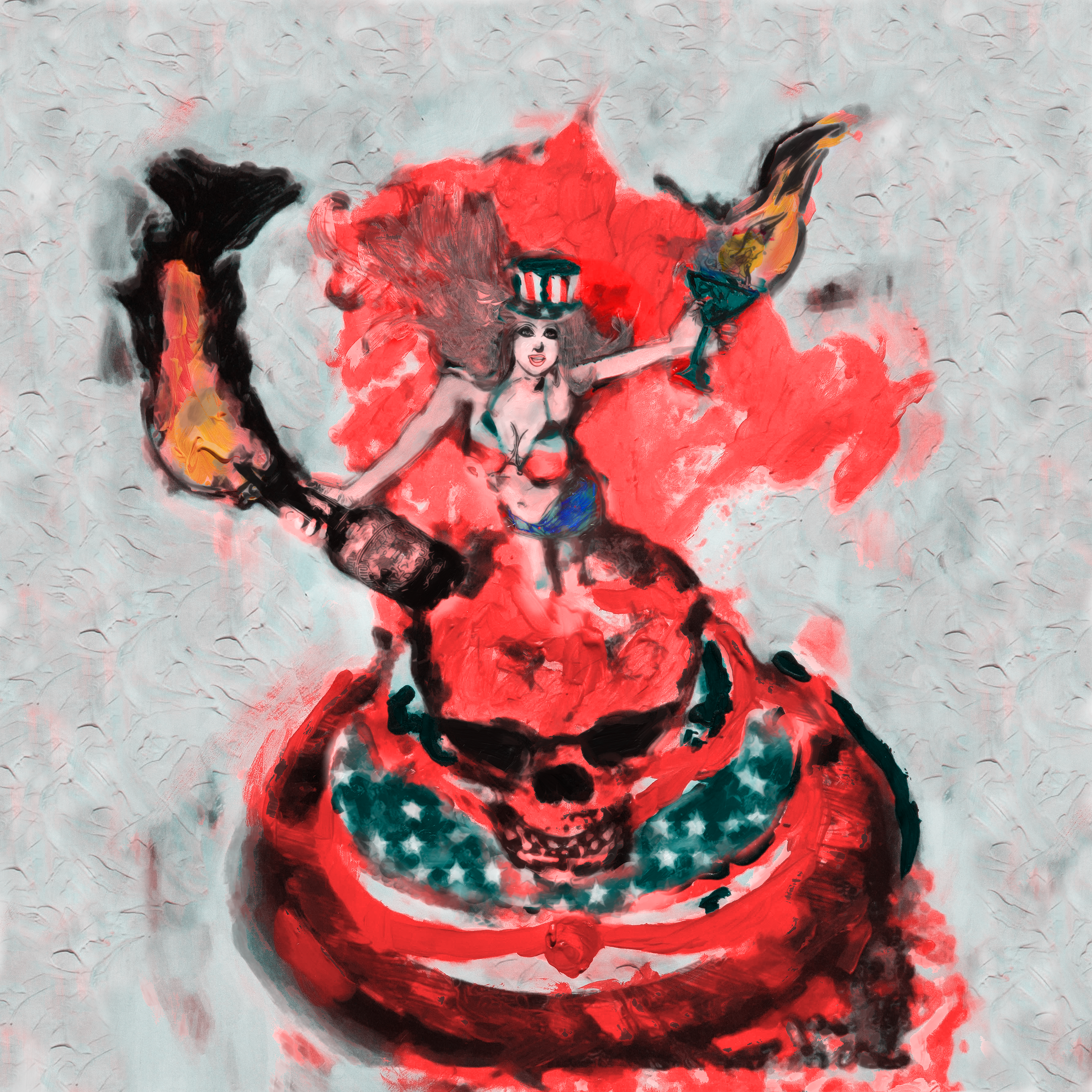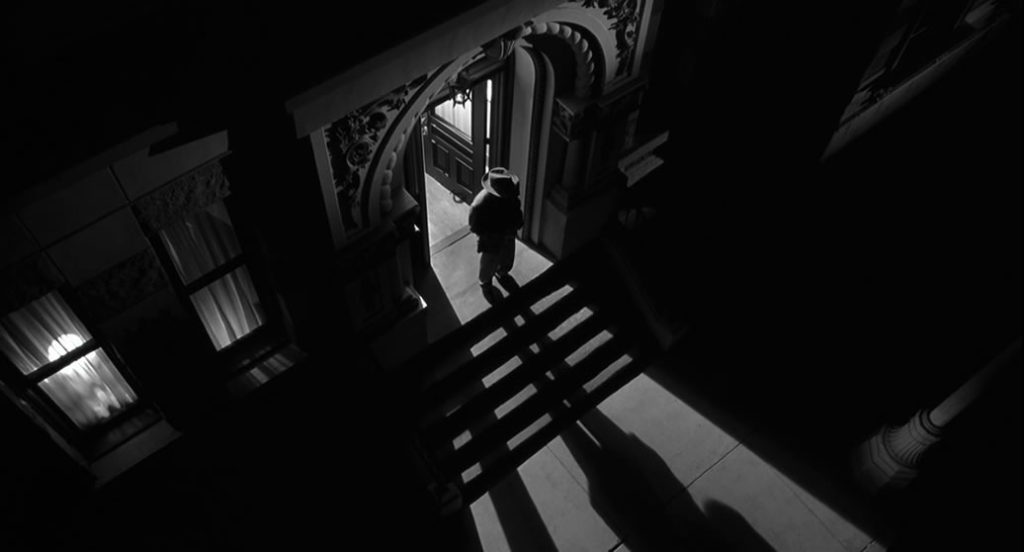
I once made the acquaintance of a man who told me he never watched a movie that was made before 1977 (because Star Wars debuted in ‘77). This shithead went to film school and he just wrote off everything made during the Golden Age of Hollywood. There’s a word that describes that kind of person, asshole. For his sake I hope he grew up since then and has at least watched a couple Orson Welles movies. Or The Godfather (1972) or Butch Cassidy and the Sundance Kid (1969). But who knows, he did go to film school after all. Those people can be thick skulled. This article is about why Film Noir is awesome and what that fuckmook is missing.
We at American Pulps love Film Noir. I can probably break down why we think Noir is great into two broad categories. One, the storytelling is excellent and two, they were made by Hollywood’s misfits on a shoestring budget. I’ll break down both categories so I can explain myself, the first one being more self explanatory.
1. The Writing:
OK this one’s obvious but the stories in Noir are so well done and so suspenseful that they still hold weight for today’s audience. This is because of a few things, the plot points and narrative devices are all raw and carnal. It’s the simplicity and the themes that never grow old and make them timeless. The same goes with Shakespeare, maybe the prose is dated but everyone understands what’s driving these characters, it’s feelings we all have. But Noir’s so compelling because it is average people in these extraordinary and usually terrible situations.
Dennis Lehane said it best:
“In Shakespeare, men fall from thrones. In noir, they fall from the gutter”
Film Noir is a Blue Collar Greek Tragedy. Whether you live in the city or on the farm, you’re a stockbroker or a janitor, doom is coming to your doorstep. And doom doesn’t know race or gender it doesn’t care if your famous or a nobody. It just wants to mess up your day.
Here’s a few plot points from some awesome Film Noir’s
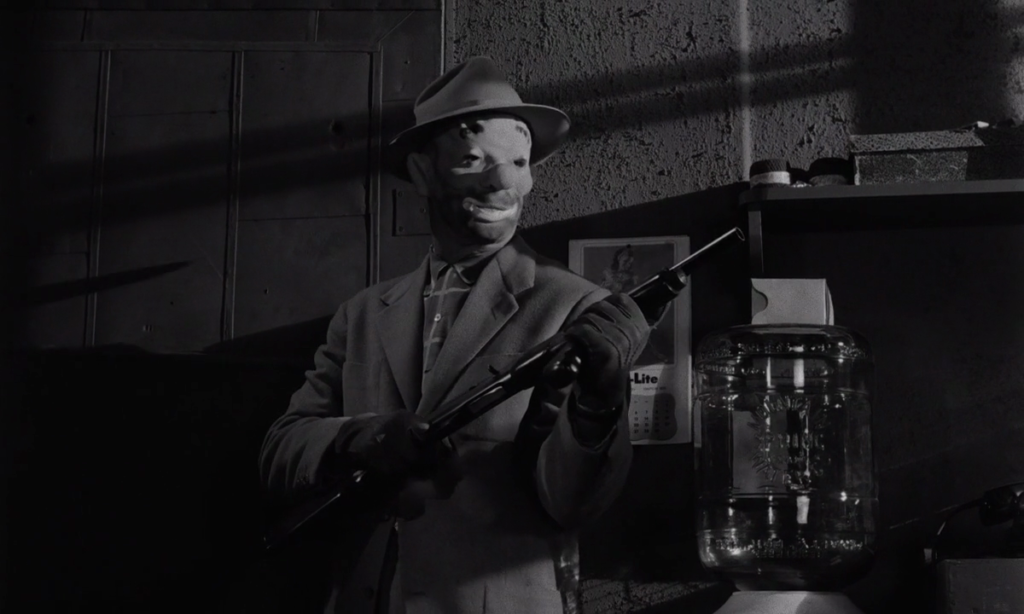
THE KILLING: Johnny Clay (played by Sterling Hayden) is a veteran criminal planning one last heist. He plans to steal $2 million from a racetrack. The team he puts together consists of a corrupt cop, a window teller who works at the racetrack, a wrestler who will pick a fight at the track bar and cause a distraction, said bar’s bartender, and a sharpshooter who will shoot the favorite horse during the race. This is a plan that would make Parker and Danny Ocean blush.

DOUBLE INDEMNITY: In 1938, Walter Neff (played by Fred MacMurray), a successful insurance salesman, returns to his office sporting a gunshot wound. He begins dictating a confession into a Dictaphone.
He talks about meeting Phyllis Dietrichson (played by Barbara Stanwyck) on a house call to remind her husband (Tom Powers) that his automobile insurance policy is up for renewal. They flirt which naturally leads to her essentially saying she wants to murder her husband and collect the insurance. Neff says he doesn’t want any part of this but hey, this is Barbara Stanwyck! He can’t get her out of his head. She shows up at his apartment and well, he’s in on the plan now. They plan to make it look like an accident so that it will trigger the “double indemnity” clause and pay out twice the policy’s face value. It doesn’t work out.
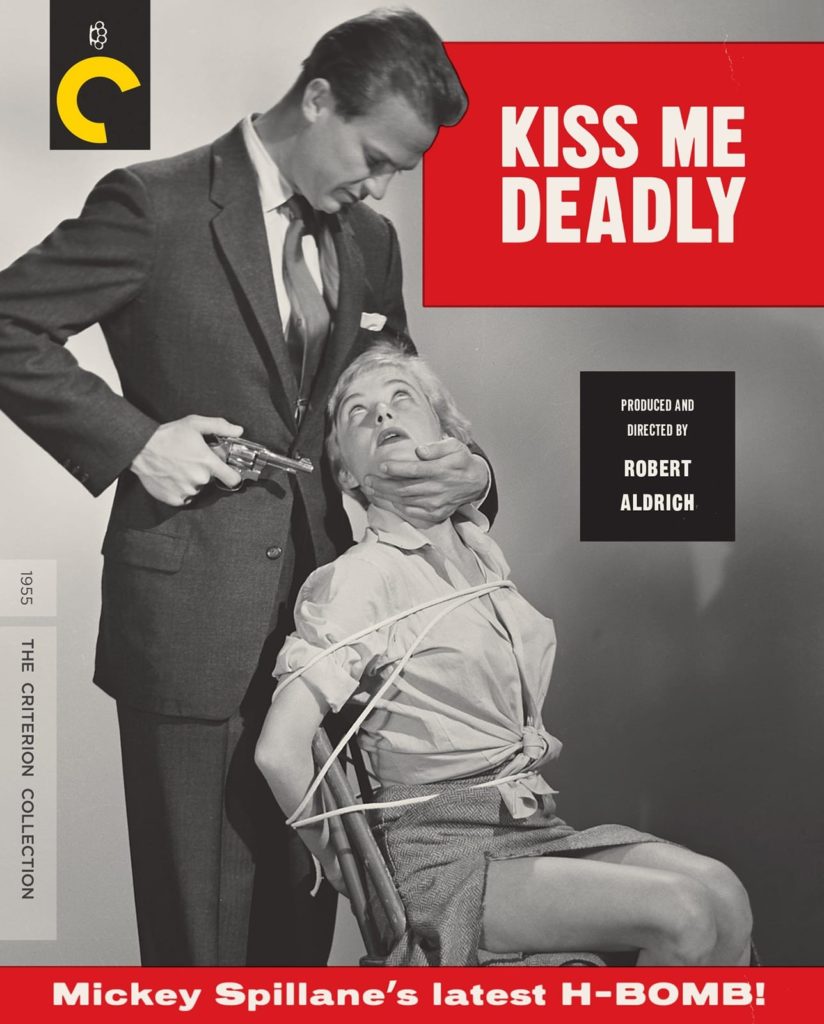
KISS ME DEADLY: Is part of the Mike Hammer series. Hammer, (played by Ralph Meeker) is a private detective based out of Los Angeles. Mike and his secretary (and lover) Velda (played by Maxine Cooper) usually work on “penny-ante divorce cases.”
One night Hammer gives a ride to Christina (Cloris Leachman), a hitchhiker wearing only a trench coat. She’s escaped from a mental institution. They get mugged by some thugs, and Hammer awakens to Christina screaming and being tortured to death. The thugs then push Hammer’s car off a cliff with Christina’s body and an unconscious Hammer inside. Hammer next awakens in a hospital with Velda by his bedside. That’s when things start to get bad.
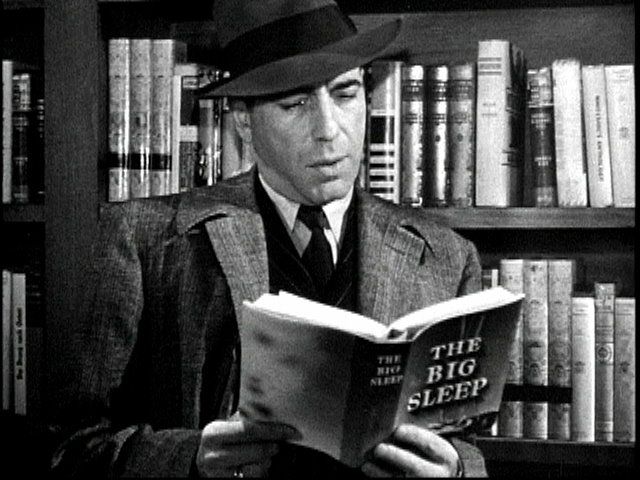
THE BIG SLEEP: Another noir with an LA based Private Detective. Phillip Marlowe’s (Humphrey Bogart) client is the wealthy and elderly General Sternwood (Charles Waldron) who wants Marlowe to deal with a bookseller who’s trying to blackmail his wild young daughter, Carmen (Martha Vickers). Carmen has a habit of getting blackmailed by disreputable men. Sternwood mentions his other, older daughter Vivian (Lauren Bacall) is in a loveless marriage with a man named Rusty Regan, who has disappeared (this becomes important incase you didn’t know). This one’s got a lot of twists and turns.
One thing all of those stories have in common is that they were adapted from awesome hard-boiled paperback pulp fiction novels. And the screenplays are written by the same people who wrote great pulps. The Killing (1956) was written by Jim Thompson and Stanley Kubrick and adapted from Lionel White’s novel, Clean Break. Double Indemnity (1944) was a James M Cain novel adapted by Raymond Chandler (the link is for a drink recipe and story about Chandler writing The Blue Dahlia another Film Noir of note) and Billy Wilder. Kiss Me Deadly (1955) was originally a Mickey Spillane novel and The Big Sleep (1946) was the novel that put Raymond Chandler on the map (the novel was published in 1939). Starring Humphrey Bogart and Lauren Bacall, The Big Sleep was adapted by William Faulkner and the epitome of Film Noir. Even The Killers (1946) was based off a short story by Ernest Hemingway written in 1927. John Huston was one of the people who adapted that, as well as Dashiell Hammett’s The Maltese Falcon (1941) which he also directed.
2. The Production:

When it comes to the whole style and noir aesthetic, one could teach class on Orson Welles’ contributions to the genre alone. The Stranger (1946), The Lady from Shanghai (1947), The Third Man (1949), and Touch of Evil (1958) are all classics and must sees for anyone just getting into Film Noir. In fact, click here to read an article about the auteurs of Film Noir. Their work is still highly influential to cinema today, but that’s all in the other article.
But for us, what makes Film Noir so awesome is that David and Goliath mentality the smaller studios had making them. The lighting and fog was so intense in some of these movies because they simply didn’t have props or film sets to use. They had to quite literally paint with light to give the background some texture. Otherwise it’s just a boring room or street.
Speaking of streets, while filming on location was something done even in the Silent Era (Charlie Chaplin’s The Gold Rush and Trader Horn comes to mind – Trader Horn was originally Silent and then they had to do it again with sound after filming in Africa for months – that’s a story in itself), Film Noir took filming on the street to a whole new level. The Naked City (1948) doing it to great effect, in a documentary style whodunit that earned an academy award in cinematography and editing. This style was so influenced by the crime scene photographer WeeGee that they even took the name from one of his books.
Sure MGM made Film Noir movies, The Black Hand (1950) is awesome by the way. But Noir’s roots come from hunger even by the directors and producers putting the movies together. The B-Hive Studios couldn’t get the big stars, they couldn’t get impressive sets and sound stages so they had to hide the blemishes in Black and White, rain, fog, intense lights and dark shadows.
But the lack of budget’s what makes it awesome. It’s what I loved about Conan when he was on Late Night and didn’t have the money that hack Jay Leno had. Working with what you got, ‘taking chicken shit and making chicken salad’ as my dad always would say is what makes these things so great. Now people throw money at movies when the lower budget films have to rely on drama and suspense over avatars and explosions. Give me a movie about love lost, immediate danger and loneliness over some super hero pyrotechnic porn any day of the week. Even if it was made before 1977.



